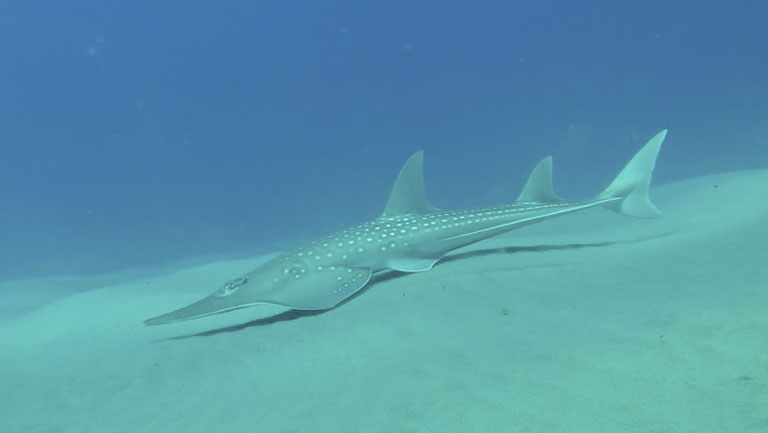Read more:
http://https//news.mongabay.com/2019/07/information-is-key-but-lacking-for-sharks-and-rays-in-the-western-indian-ocean-commentary/The Wildlife Conservation Society’s WIO shark and ray program recently assimilated all available information on threatened shark and ray species in the WIO, highlighting the major gaps in our knowledge of shark and ray biology, ecology, and fisheries. The database identifies research priorities for shark and ray species in the region so that conservation and research activities can focus on these key aspects.

A wedgefish (Rhynchobatus djiddensis) swimming along the sea floor in the Ponta Partial Marine Reserve in southern Mozambique. Photo Credit: WCS.
One of the biggest information gaps for threatened shark and ray species in the WIO is movement behavior. Understanding a species’ movement is critical when considering potential protection measures. Movement behavior will dictate the required size and placement of a marine protected area (MPA) and determine whether an MPA could offer any protection at all for the species. Spatially and temporally predictable aggregations, such as the whale shark aggregations off Tofo in southern Mozambique, and off Nosy Be in north-west Madagascar, increase a population’s vulnerability to fisheries, as many individuals can be caught at the same time, and during ecologically important events, such as mating. Effective protection of such species, therefore, also requires an understanding of their aggregation dynamics.